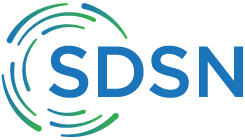Rationale and definition:
Developmental potential in early childhood is measured as an index, currently represented in the Multiple Indicator Cluster Survey (MICS) that assesses children aged 36-59 months in four domains: language/literacy, numeracy, physical, socio-emotional, and cognitive development. Each of these four domains is measured through instruments based on real-time observation. The MICS surveys calculate an overall Index Score as the percentage of children aged 36-59 months who are on track in at least three of the four domains.
Disaggregation:
By sex, age and urban/rural.
Comments and limitations:
A major shortcoming of this metric is that it describes a composite index. As emphasized in this report (Section III), composite indices should generally not be used for SDG monitoring purposes – particularly since they expand the number of variables that need to be considered under Global Monitoring Indicators. Moreover, it will be difficult to track the ECD Index in all countries since it relies on MICS data, which is only collected in a sub-set of countries. We therefore welcome suggestions for how the critical issue of ECD can be tracked in an indicator framework.
Other measures of caregiver- or parent-reported young child development exist or are under development, including the Early Development Instrument and the Index of Early Human Capability, which incorporate items representing each of these domains and are being used across high-, middle-, and low-income countries.1 Important complements to this form of measure are those assessments that can capture development in specific areas over time (e.g. growth in language or emotional skills).
Preliminary assessment of current data availability by Friends of the Chair:
B
Primary data source:
Household surveys, including the Multiple Indicator Cluster Surveys (MICS).
Potential lead agency or agencies:
UNICEF, UNESCO.
Janus, M.and Offord, DR (2007). Development and psychometric properties of the Early Development Instrument. Canadian Journal of Behavioural Science 39, 1-22.

